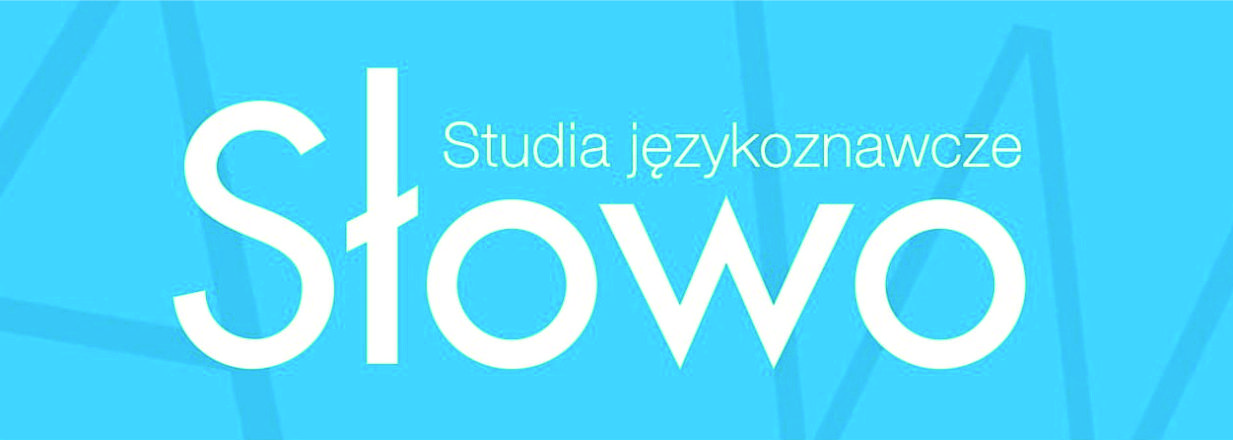Model koneksjonistyczny w pracy reportera na przykładzie „Wież z kamienia” Wojciecha Jagielskiego
DOI:
https://doi.org/10.15584/slowo.2017.8.18Abstrakt
Showing is a purpose of the present article connectionist of approaching the modelling of mechanisms of the cognitive development at the journalist. It is the attempt to show as the brain, the body and the environment are cooperating in the destination of getting, creating and the transmission of information by the reporter. Models connectionist is manifesting itself above all in creating models of mechanisms of the development, referring to principles of the processing of information by neural networks, and from here enough enough clearly for they can to be surrendered for direct checking results on the road of the simulation and comparing achieved with empirical data. Wojciech Jagielski journalist, reporter, correspondent in the book from the stone described Towers conflict among two Chechen leaders, with supporter of Szamilem terrorist attacks with Basajew and prudent and pragmatic colonel Asłan Maschadow. Jagielski stayed in Chechens a few weeks what let him for thorough getting to know that environment. A fate divided civilians, participated in secret meetings with leaders of guerrillas, talked to most urgently guarded commanders and getting the amazing frankness out of them, even stopped in the fire of the fight. The knowledge, with which a neural network is getting the reporter as a result of the learning, is encrypted in scales of connections between individuals. Importances of mergers are just determining it way, into which entrance images are being copied to initial insults.Downloads
Bibliografia
Jagielski W., 2008, Wieże z kamienia, Warszawa.
Damasio A., 2000, Tajemnica świadomości. Jak ciało i emocje współtworzą świadomość, tłum. M. Karpiński, Poznań.
Fahlman S.E., Lebiere C., 1990, The cascade-correlation learning architecture [w:] Advances in neural information processing systems 2, red. D.S. Touretzky, San Mateo, s. 181–220.
Formy aktywności umysłu, ujęcia kognitywistyczne. Emocje, percepcja, świadomość, 2008, red. A. Klawiter, Warszawa.
Holmes N.P., Spence C., 2005, Multisensory Integration: Space, Time and Superadditivity, Oxford, s. 132.
Hankała A., 1989, Ogólne koncepcje psychologiczne i związane z nimi nurty badań nad uczeniem się [w:] Psychologia uczenia się, t. 2, red. Z. Włodarski, Warszawa, s. 315.
Koch Ch., 2008, Neurobiologia na tropach świadomości, tłum. G. Hess, Warszawa.
Króliczak G., 1999, „Dwa mózgi wzrokowe. Percepcja a wzrokowa kontrola działania”, „Kognitywistyka i Media w Edukacji”, t. 2, nr 1.
Lieberman M., Gount R., Gilbert D.T., Trope Y., 2009, Odruchowość a refleksja: społeczno-neurokognitywne podejście do wnioskowania atrybucyjnego [w:] Formy aktywności umysłu, red. A. Klawiter, tom 2, Warszawa, s. 202–244.
Marr D., 1982, Vision. A Computational Inrestigation into the Human Regresentation and Processing of Visual Information, San Francisco, s. 54–61.
Metzinger T. (red.), 1995, Conscious Experience, Thorverton, s. 68.
Park D., 1983, The Problems of Perception, Oxford.
Prinz J., 2010, Can concept empricisim forestall concept eliminativism?, „Mind&Language” 25, s. 612.
Ramachandran V. S., 2012, Neuronauka o podstawach człowieczeństwa. O czym mówi mózg?, tłum. A. i M. Binderowie, E. Józefowicz, Warszawa.
Thelen E., Smith L.B., 1994, A dynamic systems approach to the development of cognition and action, Cambridge, s. 23.
Touretzky D., 1990, Common Lisp: A Gentle Introduction to Symbolic Computation, California, s. 181–220.
Zeki S., 1993, A vision of the brain, Oxford.
Stańczyk K., Wojciech Jagielski: Postać korespondenta wojennego to postać z kiepskiego filmu [rozmowa], „Wokół Faktu” z 11 stycznia 2017; http://wokolfaktu.pl/wojciech-jagielski-postac-korespondenta-wojennego-to-postac-kiepskiego-filmu/ [dostęp: 1.12.2017].
Pobrania
Opublikowane
Jak cytować
Numer
Dział
Licencja
Prawa autorskie (c) 2017 Słowo. Studia językoznawcze

Utwór dostępny jest na licencji Creative Commons Uznanie autorstwa – Użycie niekomercyjne 4.0 Międzynarodowe.


